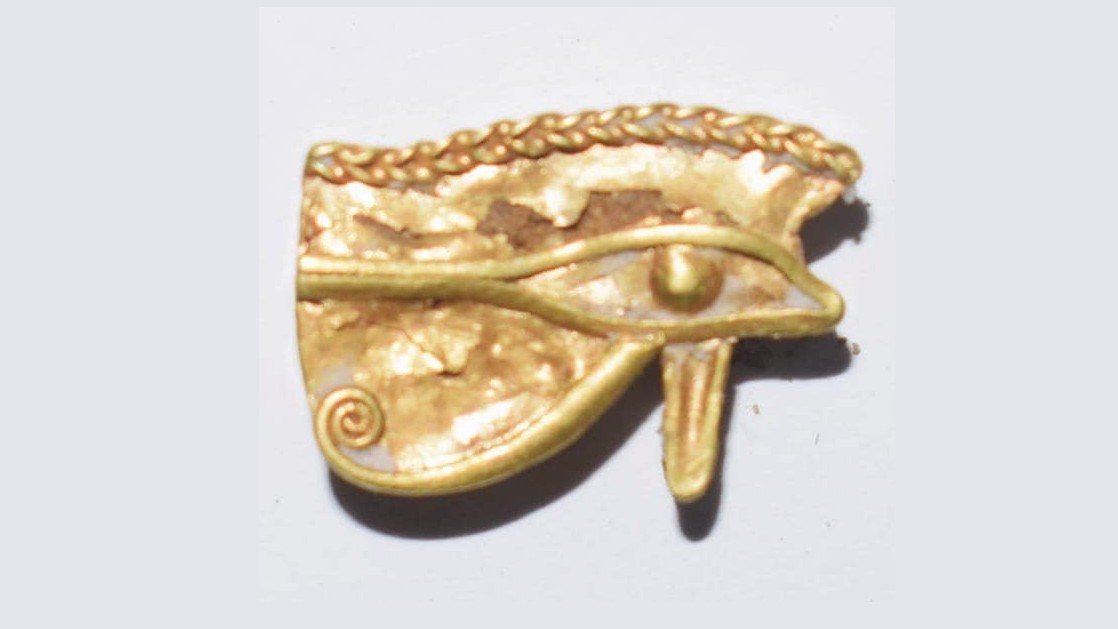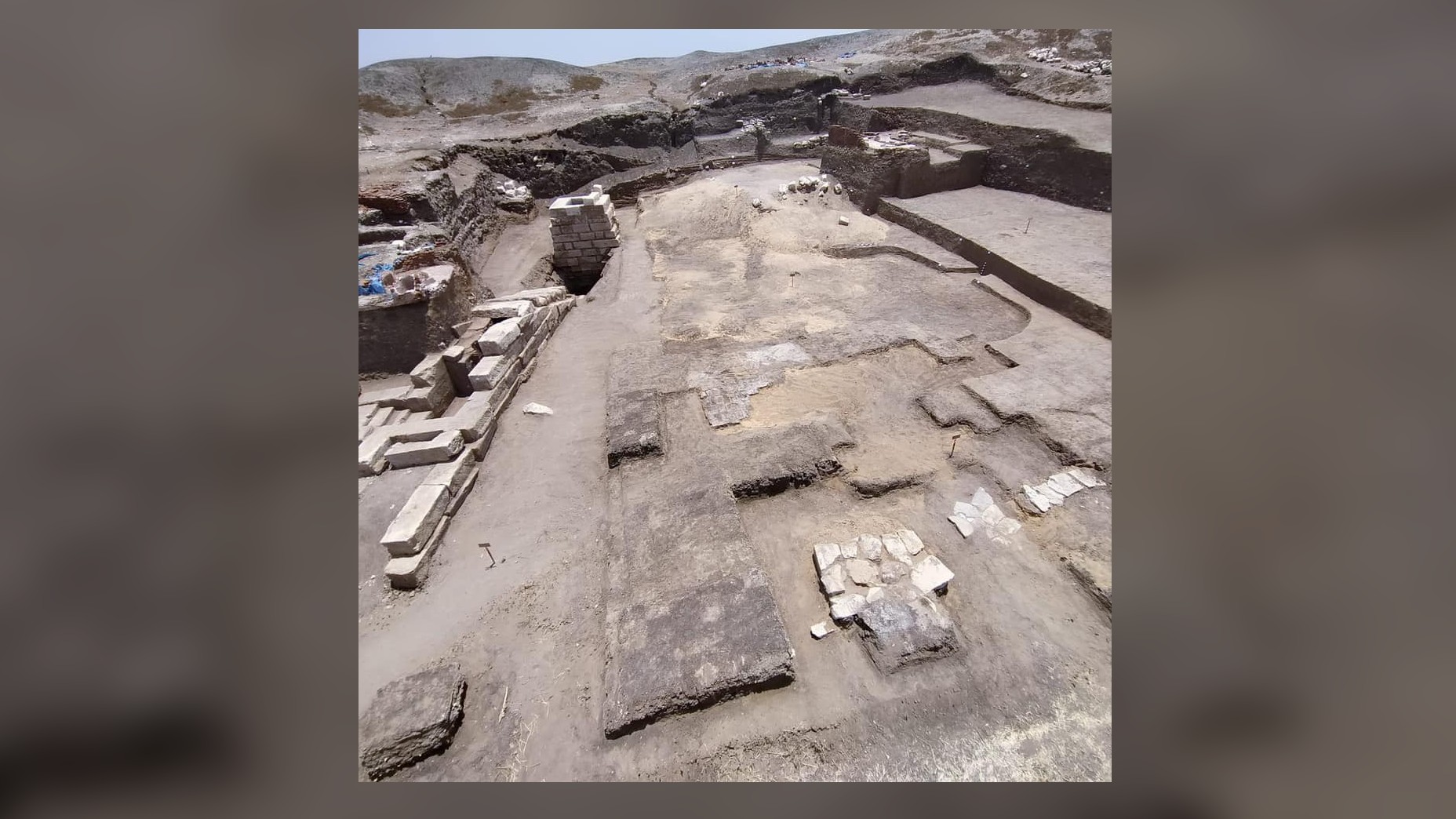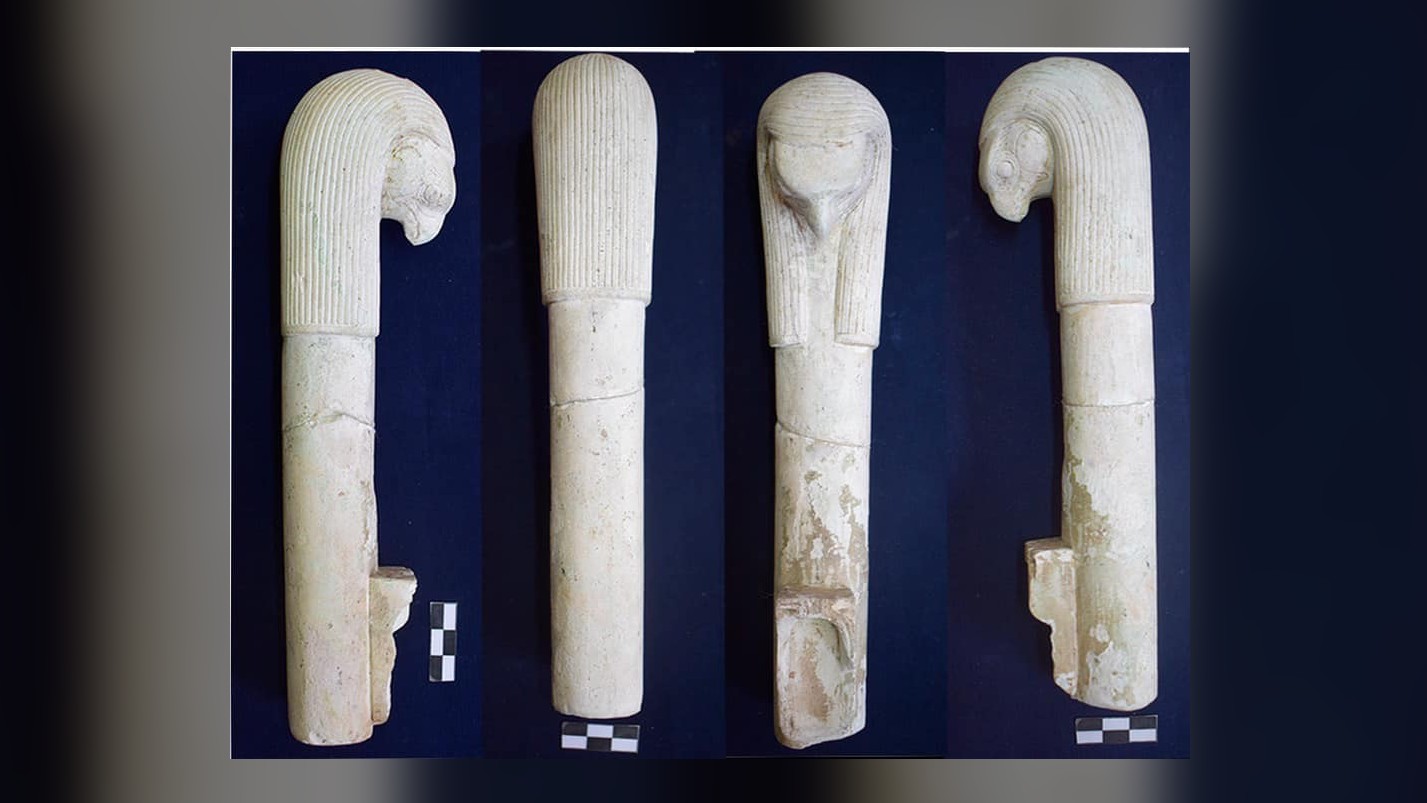Ritualistic artifacts found at 'Temple of the Pharaohs' in Egypt
The artifacts were used to worship Hathor, the goddess of the sky, and other deities.

Archaeologists excavating the "Temple of the Pharaohs" (as it is now called) at the ancient city of Buto, about 59 miles (95 kilometers) east of Alexandria, in Egypt, have found 2,700-year-old tools and sculptures that were used in rituals for Hathor, the goddess of the sky.
The artifacts are associated with a mix of deities, not just the goddess of Hathor, that were worshipped in ancient Egypt and were presumably venerated at the temple, the Egyptian Ministry of Tourism and Antiquities said in a statement.
The finds include incense burners made of faience, one of which has an image of the god Horus on the top, Ayman Ashmawy, the director-general of the ministry's excavation department, said in the statement. The finds also include an udjat eye made out of gold. Udjat eyes were popular in ancient Egypt and were considered to be depictions of the eye of the god Horus. They were sometimes seen by the ancient Egyptians as symbols of protection and healing. The discoveries also include small statues of the goddess Taweret, who was associated with pregnancy and childbirth, and the god Thoth, who was associated with the moon and learning.
Related: Photos: 2,000-year-old tombs found in Egyptian oasis
Ashmawy also noted that the finds include ivories that depict women carrying offerings and scenes of daily life that included plants, birds and animals. Additionally, they found artifacts that were inscribed with hieroglyphs.



Some of the inscriptions mention the names of pharaohs, and archaeologists were able to deduce that the artifacts date to the 26th dynasty (688 B.C. to 525 B.C.). During this time, Egypt gained its independence from the Assyrians and Kushites, and it flourished for a time before being conquered by the Persian Empire.
Several clay pots found at the site may have been used in temple services. The finds also include small pieces of gold that may have been used to add gold gilding to objects.
Sign up for the Live Science daily newsletter now
Get the world’s most fascinating discoveries delivered straight to your inbox.
Excavation of the temple and analysis of the remains are ongoing.
Originally published on Live Science.

Owen Jarus is a regular contributor to Live Science who writes about archaeology and humans' past. He has also written for The Independent (UK), The Canadian Press (CP) and The Associated Press (AP), among others. Owen has a bachelor of arts degree from the University of Toronto and a journalism degree from Ryerson University.










